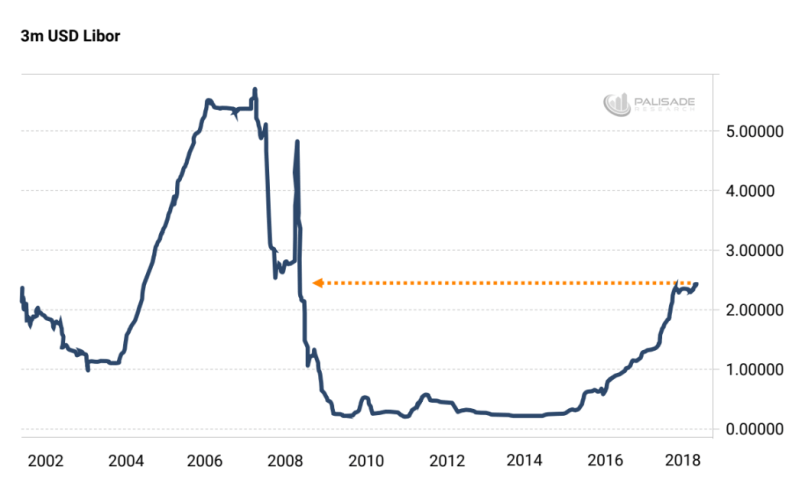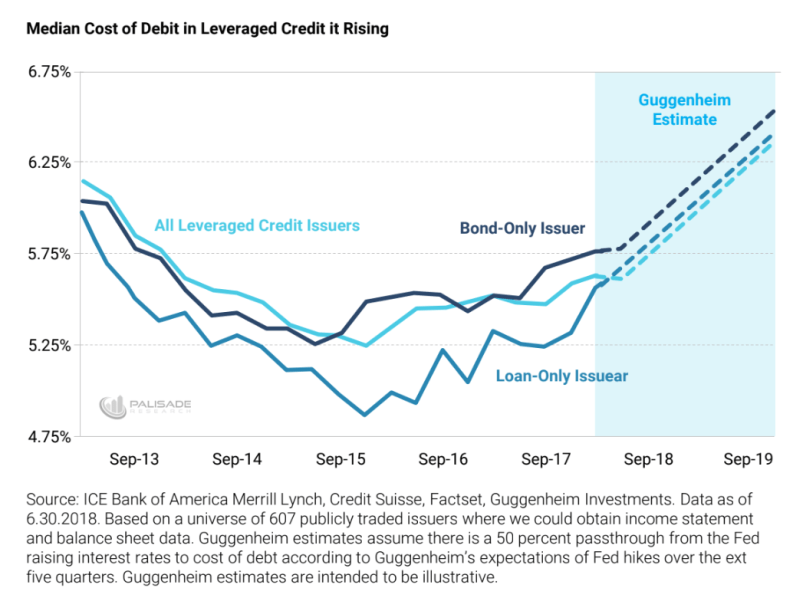Another week and another signal flashing red to deal with. . .
The credit market – in my opinion – is indicating an inevitable ‘crunch’ coming up. And even worse – we’re seeing the global dollar shortage deepening.
Many readers know I haven’t exactly been shy about focusing on this dollar shortage problem all year – you can read more here, and here. Personally – I think this may be the trigger that kicks off a brutal, worldwide, financial crisis. . .
For instance – just look at what’s happened with Emerging Markets because of a tightening Federal Reserve, a stronger dollar, and drying liquidity. Don’t forget – a dollar shortage is synonymous with disappearing liquidity. Which means we can expect more violent and sudden market crashes to occur – just like we saw over the last two weeks.
Stock markets (and bond markets) around the world took big losses. The only thing that really outperformed was gold.
The fear of rising ‘real’ U.S. interest rates and slowing economic growth (especially from China) is making investors rethink their positions. Not to mention the cost of borrowing short-term dollars via LIBOR (aka London Interbank Offered Rate) is indicating aggressive financial tightening.
Take a look at the 3-month U.S. dollar LIBOR rate – it just had its biggest one day jump since late May. And even more startling – it’s now at its highest level since 2008.

So what does this mean?
Well – it’s indicating that the short-term borrowing of dollar denominated debt’s getting very expensive. And investors – especially overseas – are finding it harder and costlier to get their hands-on U.S. dollars.
This isn’t a big surprise – but what’s making me worried is just how costly and scarce these dollars are becoming. . .
Corporations worldwide borrowing dollars for business operations. And even ordinary citizens with mortgages and credit cards (which are mostly driven by LIBOR) will face higher interest payments.

The trend has been overlooked by the market over the last three years – mainly because many believe that U.S. growth will pick up, offsetting the higher interest payments.
But one thing’s certain – with current tightening policies in place, the cost for borrowing dollars short-term will continue much higher. For dollar borrowers and the institutions depending on short-term debt – this is your wake-up call. Your liabilities are becoming difficult to service. And your assets are vulnerable.
This is not a good situation to be in. . .
I wrote back in April that there was a ticking time-bomb of over $7.5 trillion in debt that’s “highly vulnerable to rising LIBOR rates” (read here). . .
For instance – I said:
“Both corporate and non-corporate business loans and commercial mortgages are about half tied to LIBOR. . . To put this in perspective, a 35-basis point increase could raise business loan interest costs by $21 billion. So, with yields rising – both on the short end and the long end of the curve – this could hurt the business sector. Which means the stock market. . . Just look at the stocks with high-floating rate debts (adjustable interest) having under-performed the S&P 500 when borrowing costs rose…”
So – I know the idea of a dollar shortage sounds strange to many. Especially because of how much the Fed’s printed since 2008. But the problem is – the world created much more debt than the Fed’s created dollars.
Putting this into perspective – for every dollar that’s been printed – there’s roughly 20 times the amount of debt outstanding. And most of that debt ended up abroad. Like in the Emerging Markets.
And everything was fine – as long as the Fed was easing and inflation was low. . .
But since late December 2015 – the Fed’s been tightening. And if you look at both those charts above you, can even see that’s when borrowing costs started trending higher.
Now with all this Fed tightening, soaring U.S. deficits, a stronger dollar, and higher rates – servicing all this outstanding debt is becoming impossible. . .
Here’s what I wrote last week summarizing why the dollar shortage is kicking off:
“The soaring U.S. deficit requires an even greater amount dollars from foreigners to fund the U.S. Treasury. But the Fed is shrinking their balance sheet… which means they’re sucking dollars out of the economy (the reverse of Quantitative Easing which was injecting dollars into the economy). This is creating a shortage of U.S. dollars – the world’s reserve currency – therefore affecting every–global economy…
This is going to cause an evaporation of dollar liquidity – making the markets extremely fragile… And since then – the evaporation of dollars has only worsened. The Treasury needs more dollars than ever as deficits continue soaring to levels not seen since 2008… The Fed’s ramping up their Quantitative Tightening (sucking dollars out of the banking system). This is pulling out as much as $50 billion dollars a month (or $600 billion a year) … Also – because of the Trump Tax Cuts – we’ve seen corporations take their cash piles back home. This suddenly yanked dollars out of foreign banks that were once ‘Tax Havens’. . .”
So – thanks for Econ 101 teaching us supply and demand – the constantly shrinking pool of dollars is making the dollar’s value appreciate. And that means dollar-denominated debts are becoming harder to service.
And since the Fed isn’t easing anymore – pumping cheap dollars into the system – debtors can’t pay back all this outstanding debt (remember $1 dollar for every $20 of debt).
“But can’t they continue refinancing new, cheaper debt to pay back old debts?”
That’s exactly the problem. The 3-month USD LIBOR rate’s rising (as shown in the first chart in this article) – making it expensive to borrow dollars. Thus forcing debtors to pay more for their short-term funding.
And it’s only going to get more expensive going forward.
The mismatch between all the dollar denominated debts outstanding – and the cheap money flows required to pay them back – is pushing the world into a new financial crisis.
Hence – the dollar shortage problem i.e. there are just simply not enough dollars to go around.
That is – under the current monetary policy of tightening. . .
This is why I’m insistent that the Fed will reverse into easing – like pushing rates negative and heavy money printing – much sooner than many think.
But until then – expect the dollar to stay stronger. And for short-term rates to increase – forcing Emerging Markets and global corporations into default.
For example – we’ve already seen in China this year – they’ve had record onshore bond defaults as liquidity dries up.
Higher short-term borrowing costs and a stronger dollar both increase ‘tail risks’ (aka black swans) for global investors.
So keep all this in mind and don’t be surprised if the markets suddenly plummet again. . .
Which stock should you buy in your very next trade?
With valuations skyrocketing in 2024, many investors are uneasy putting more money into stocks. Unsure where to invest next? Get access to our proven portfolios and discover high-potential opportunities.
In 2024 alone, ProPicks AI identified 2 stocks that surged over 150%, 4 additional stocks that leaped over 30%, and 3 more that climbed over 25%. That's an impressive track record.
With portfolios tailored for Dow stocks, S&P stocks, Tech stocks, and Mid Cap stocks, you can explore various wealth-building strategies.

